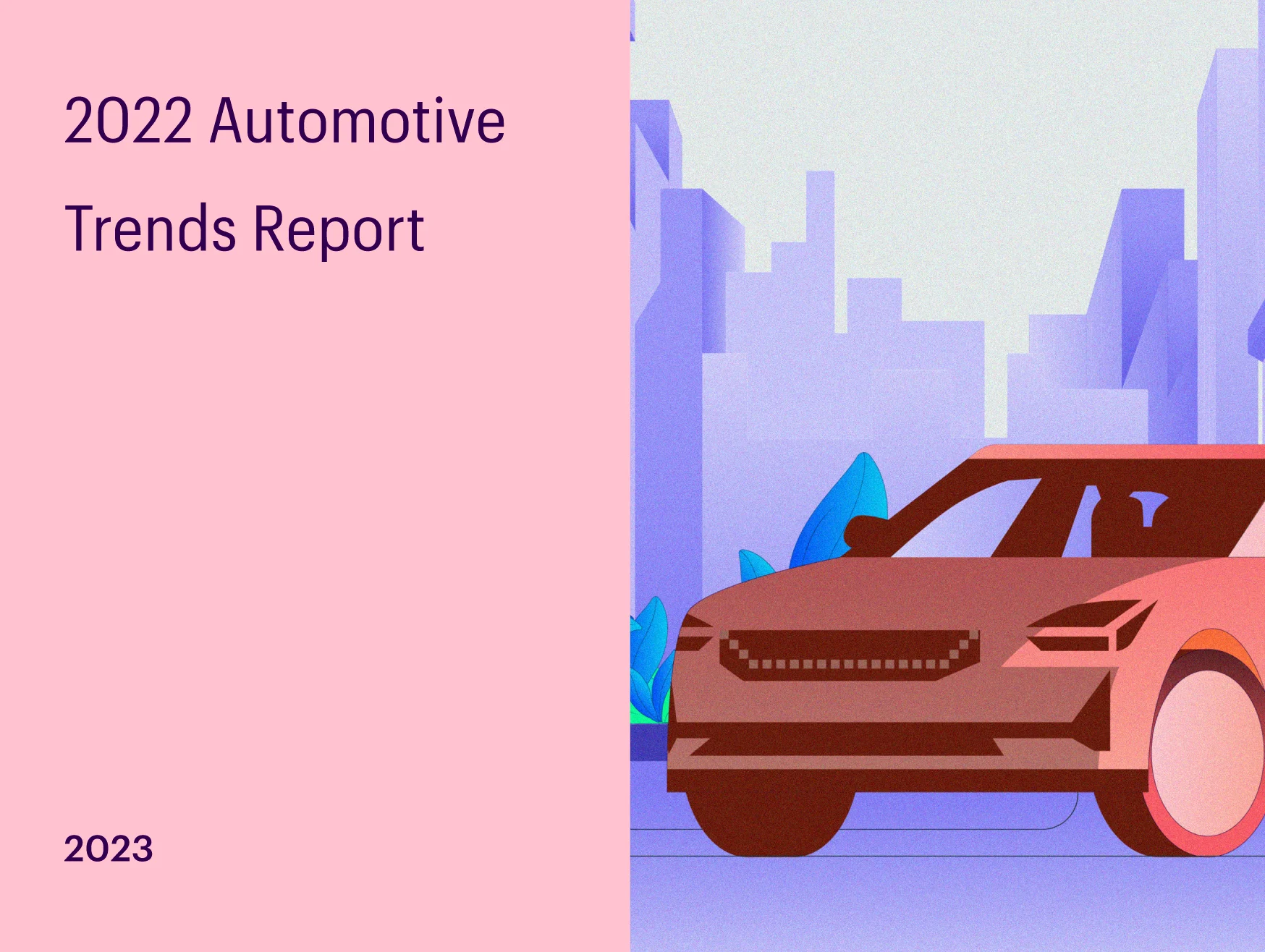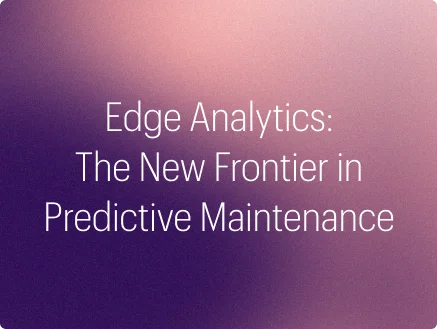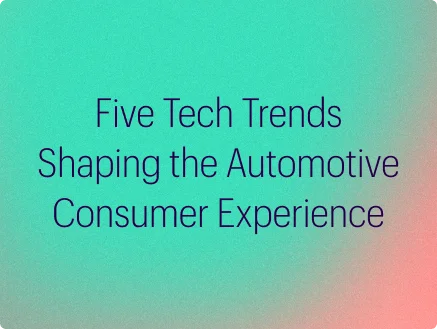The global automotive industry is in top gear at exploring and exploiting data across its value chain. There is no doubt that data is becoming a pivotal part of functions such as R&D, maintenance and marketing. Automotive enterprises ranging from start-ups to industry leaders are using advanced analytics to leverage vehicle data to drive their bottom line. According to a McKinsey survey, monetizing telematic data can drive the US Auto industry to $750 billion by 2030.
The steady proliferation of connected vehicles has unlocked a vast repository of data. This data is being capitalized by enterprises to enable functions such as predictive vehicle maintenance, usage-based insurance, and real-time mapping, among others. Gartner has predicted the possibility of over 250 million connected vehicles plying on roads by the end of 2020. This indicates a surge in smart automotive data that can potentially be a goldmine of tangible insights for automotive enterprises.
Connected vehicle data monetization – use cases in the automotive ecosystem
Predictive maintenance:
Sensors on connected vehicles transmit terabytes of data in the form of diagnostic codes. These codes correlate to vehicle performance indicators such as fuel level, pedal position, tire pressure and a plethora of other metrics. To extract the maximum value out of this data, OEMs use customizable software platforms that process data into vehicle diagnostics information. This information is used to trigger warnings to drivers when there is a probability of a vehicular failure. For instance, Chevrolet has equipped its vehicles with a predictive maintenance alerting system that monitors vehicle health and issues timely notifications on maintenance needs.
Usage-based insurance:
The fourth Global Automotive OEM Telematics Market Report authored by Berg Insight predicts that about 258 million telematics units will be installed in vehicles by 2023, out of which North America and Europe will account for 47% and 40% of active installation, respectively. This will set the stage for accelerated adoption of usage-based insurance among customers. The prospects of earning discounts on premiums for good driving behavior will motivate customers to gravitate towards usage-based insurance in the coming years. Telematics units embedded in vehicles furnish data on driver attributes such as vehicle speed, distracted driving, the nature of applying brakes, and more. This offers the necessary direction for insurers to create driver profiles based on their risk levels and pitch premiums accordingly. A recent McKinsey study states that active usage of vehicle telematics data can generate about $1.5 trillion in revenue for automakers in the future.
Reliable automotive history:
There are very few instances of accurate maintenance visit logs and accidents documented in vehicle history reports. There are no clear means and measures to verify these reports, as commercial providers of vehicle history take no responsibility for erroneous reports or omissions. With the advancement of technologies, new features such as data collectors that can be fixed as On-Board Units (OBUs) in vehicles act as reliable data sources. Information generated by these units can be leveraged to know an accurate and verifiable vehicle history. For example, leveraging these data sources helped Tesla to challenge a customer’s claim of a vehicle autonomously colliding against a building.
Targeted advertisement campaigns:
Hakan Kostepen, former Executive Director of Product Strategy at Panasonic Automotive Systems America, opined, “The key is to connect time-, space-, and place-relevant telematics information with the car and the consumer’s lifestyle.” To put it in simple diction, advertisers leverage consumer-driving data to promote advertisements that are aligned with consumer preferences. For instance, GPS telematics data will help drive-through restaurants and retailers to tailor advertisements based on the routes taken by consumers. The application of prescriptive and predictive analytics on user behavior data can coax customers to steer towards auto dealers or repair shops that are affiliated with an OEM. For instance, a driver looking for vehicle service/repair services can be nudged with timely service coupons to visit OEM-affiliated repair shops.
Customer experience:
It is no news that manufacturing vehicle components is no longer central to the business strategies of automotive OEMs as access to connected vehicle data has unlocked newer business opportunities. For instance, the liberty to capitalize on customer information derived from connected vehicle data has empowered OEMs to own the customer experience. Meanwhile, discrete insights into customer behavior and preferences have enabled OEMs to speculate on products and services that can draw customer attention, thereby increasing the probability of better customer acquisition. As an example, infotainment systems fitted in vehicles driven by a corporate traveler store user interaction data. This data can be capitalized by OEMs who advertise products that specifically meet the needs of a corporate traveler on-the-go. This range of products can include digital applications to check and reply to emails, central display of trip monitors, and in-car entertainment features, among others. OEMs also have the option to trade vehicle data with customers like corporate fleet managers, who can track the driving discipline of their employees and rank them accordingly in the driving community.
Setting the premise for effective connected vehicle data monetization:
If there is one resounding fact that emerges from the above use cases, it is that connected vehicle is the future of the automotive industry. Growing stringency of emission-related regulations, avenues to provide post-sales services by OEMs, and the increasing popularity of vehicle connectivity are some factors that are catalyzing sales of connected vehicles. This, in turn, is resulting in the generation of an unprecedented amount of data that can be money-spinners for players in the automotive industry. However, tapping into this data will mean a fundamental shift from the incumbent practices of automotive enterprises to a revamped business approach. This approach should effectively set the premise for a consistent flow of data and build the right technical infrastructure. With an aim to derive maximum value from growing volumes of connected vehicle data, changes in business models will streamline communication with technology providers, data management service providers, and industries that can benefit from connected vehicle data. In 2014, guidelines on “Consumer Privacy Protection Principles for Vehicle Technologies and Services” were issued by the Alliance of Automotive Manufacturers. These guidelines hold OEMs accountable for transparent data usage and ensuring data privacy and security. This makes data privacy and security a mandate in the case of vehicle data monetization.
Creating value for customers:
Insights from a recently concluded study by a data, insights, and consulting enterprise reveal that customers prioritize safety while evaluating their options for buying a connected vehicle. Customers must be made aware of the importance of vehicle data to trigger SOS calls in real-time, transmit information to facilitate emergency services on an immediate basis, and issue road hazards. Awareness of how allowing access to connected vehicle data is critical in emergencies, and roadside assistance has motivated over 70% of customers to buy connected vehicles, according to a survey conducted by a software development company. Convenience, time savings, and cost reduction are also given due importance by customers. In terms of convenience, as was discussed in one of the use cases above, vehicle data informs on vehicles’ performance in real-time which allows scheduling maintenance to avert the risk of a breakdown. Customers must be made aware of the vehicle-to-everything (V2X) technology that enables tracking of their usual routes to issue real-time traffic updates on congestion or accidents. This effectively reduces drivers’ travel time. Vehicles fitted with the networked parking feature minimize the hassle of parking space. According to McKinsey, the prospects of saving time by networked parking elicited higher willingness among customers to share their data.
Setting the right technical infrastructure:
It is critical for OEMs to ramp up their data management capabilities and derive meaningful insights from vast and extensive data. The right technical infrastructure should enable:
- Scalable and modular solutions for both on-premise and co-location data centers to accommodate dynamic data volumes.
- Plants and warehouses must be equipped with pre-fabricated modular data centers to efficiently process locally captured data.
Ensuring data security:
According to a recent IBM Institute for Business Value study, 56% of executives have confirmed automotive privacy and security as the main drivers of consumer decisions to trust OEMs that manufacture sensor-fitted vehicles that ensure data transfers without the risks of security breach. Blockchain technology serves as one of the key enablers of data security and privacy as most of the trusted OEMs are observed to collaborate with blockchain technology enterprises. This technology enables the decentralization of registrations entered for vehicle information and end-to-end encryption of machine-to-machine data transfers. Decentralization of vehicle data registration allows OEMs to protect the exclusiveness of the data, trade data in blockchain-powered marketplaces, and use data to customize product offerings for customers.
Effective business models:
An obvious digital mandate has led automotive enterprises to revisit their incumbent business models and ideate and execute models that can strengthen the podium for effectively connected vehicle data monetization. Let’s take a look at some of the strategies that can help in building a cohesive business model:
- Instead of trying to seek success on all connected vehicle data monetization opportunities, it is prudent for automotive enterprises to factor in their capability and identify the aspects of vehicle data that they can capitalize on. Upon identification, enterprises must choose between outsourcing or striking a long-term collaboration with their preferred partners. For instance, OEMs must pragmatically choose to build an in-house automotive data ecosystem as opposed to embracing open platform strategies collaborating with external partners.
- A test-based approach is critical for developing and fielding any products or services for customers. Testing new concepts on a continuous basis to align with real-time customer sentiment should be a regular exercise.
- Studies have proven that customers exhibit more faith towards automotive brands than any leading technology companies when it comes to sharing their data. To deftly use this data as a unique selling point and maintain the halo effect, OEMs need to ensure that the suppliers they coordinate with adhere to data policies with the utmost strictness.
Conclusion
Frost and Sullivan has predicted that OEMs can expect about $33 billion revenue from vehicle data monetization by 2025. This has prompted the intensity of competition among industry players who are keen to leverage this data goldmine. The chances of squeezing the maximum value from vehicle data are subjective to industry players’ ability to build data-driven products and services that are strictly aligned with customer preferences. The ability of enterprises to utilize vehicle data to its true potential is, to a large extent, dependent on the quality of their third-party partnerships, to aid in identifying newer business opportunities with connected vehicle data monetization.



